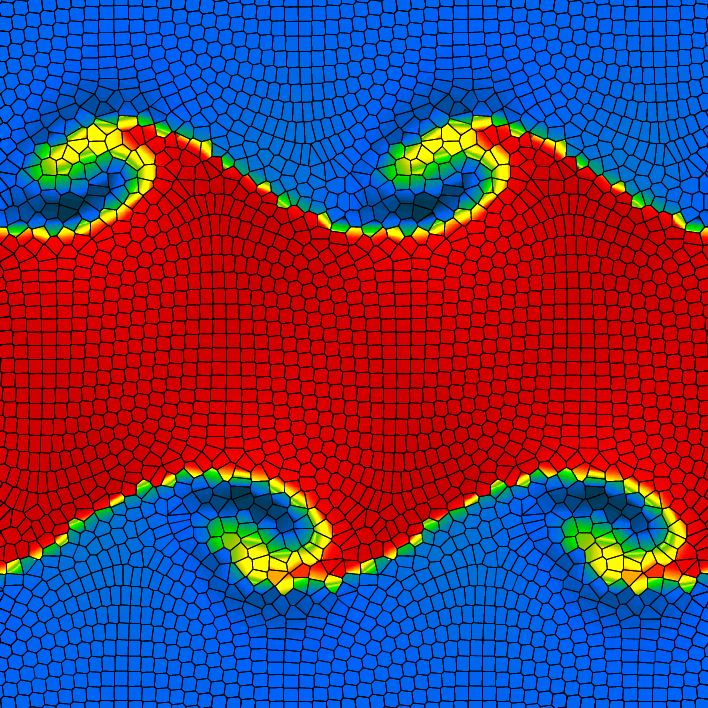AREPO – Code

The AREPO code is a cosmological hydrodynamical simulation code on a fully dynamic unstructured mesh. At present, hydrodynamic cosmological simulations usually employ either the Lagrangian smoothed particle hydrodynamics (SPH) technique, or Eulerian hydrodynamics on a Cartesian mesh with (optional) adaptive mesh refinement (AMR). Both of these methods have disadvantages that negatively impact their accuracy in certain situations, for example the suppression of fluid instabilities in the case of SPH, and the lack of Galilean-invariance, the presence of overmixing and preferred directions in the case of AMR. This makes it highly desirable to develop novel numerical schemes that are more accurate in the demanding regime relevant for cosmic structure formation. Here, large advection velocities and supersonic flows are the norm, the density contrast is highly time-variable and reaches extreme values.
In the publication
- E pur si muove: Galilean-invariant cosmological hydrodynamical simulations on a moving mesh
Springel V. (2010)
Monthly Notices of the Royal Astronomical Society, 401, 791 [ADS]
we have proposed a novel scheme which largely eliminates these weaknesses. It is based on a moving unstructured mesh defined by the Voronoi tessellation of a set of discrete points. The mesh is used to solve the hyperbolic conservation laws of ideal hydrodynamics with a finite volume approach, based on a second-order unsplit Godunov scheme with an exact Riemann solver. The mesh-generating points can in principle be moved arbitrarily. If they are chosen to be stationary, the scheme is equivalent to an ordinary Eulerian method with second order accuracy. If they instead move with the velocity of the local flow, one obtains a Lagrangian formulation of continuum hydrodynamics that does not suffer from the mesh distortion limitations inherent in other mesh-based Lagrangian schemes. In this mode, our new method is fully Galilean-invariant, unlike ordinary Eulerian codes, a property that is of significant importance for cosmological simulations where highly supersonic bulk flows are common. In addition, the new scheme can adjust its spatial resolution automatically and continuously, and hence inherits the principal advantage of SPH for simulations of cosmological structure growth. The high accuracy of Eulerian methods in the treatment of shocks is also retained, while the treatment of contact discontinuities improves.
Articles that have used or referenced our code AREPO implementing the method can be found under this link to ADS. At present, the code is not yet publicly available, but an eventual public release is foreseen in the near future.
Über das HITS
Das HITS (Heidelberger Institut für Theoretische Studien) wurde 2010 von dem Physiker und SAP-Mitbegründer Klaus Tschira (1940-2015) und der Klaus Tschira Stiftung als privates, gemeinnütziges Forschungsinstitut gegründet. Es betreibt Grundlagenforschung in den Naturwissenschaften, der Mathematik und der Informatik. Zu den Hauptforschungsrichtungen zählen komplexe Simulationen auf verschiedenen Skalen, Datenwissenschaft und -analyse sowie die Entwicklung rechnergestützter Tools für die Forschung. Die Anwendungsfelder reichen von der Molekularbiologie bis zur Astrophysik. Ein wesentliches Merkmal des Instituts ist die Interdisziplinarität, die in zahlreichen gruppen- und disziplinübergreifenden Projekten umgesetzt wird. Die Grundfinanzierung des HITS wird von der Klaus Tschira Stiftung bereitgestellt.